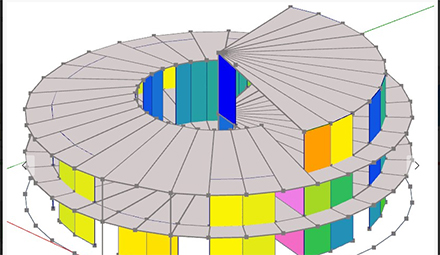
FWPA has supported a range of RD&E projects, funded jointly by industry and the Australian Government, under its voluntary matched funding program. Voluntary matching has allowed FWPA to work with some of the best minds in the country on the development of technologies and initiatives that will have significant benefits for industry long into the future. Source: Timberbiz
The scheme allows FWPA to provide up to 1:1 matched funding against the cash commitments of external investors in support of project proposals. The amount of funding offered has increased over the years, from $0.59m in 2015/16 to $3.32m in the current financial year.
The initiative has been well received by industry, with its funding cap consistently reached each year. A total of $9.01m has been invested in RD&E projects since 2016, with this work serving to increase the industry’s technical capacity.
Below is a summary of some key ongoing projects that are being supported by the voluntary matching scheme.
Next gen forest plantation investment
There are considerable areas of Australian farmland where different types of planted forest would not only yield benefits for the forestry industry, but also for agriculture and the environment. Despite the likely increases in demand for timber going forward, there is currently a lack of new investment.
The aim of this University of Melbourne research project is to design and test new and more sustainable models that will encourage investment in planted forests. To do this, researchers are analysing the requirements and past experiences of key stakeholders in specific regions, while also considering economic and environmental factors such as carbon, biodiversity and water.
The resultant models will enable the formation of new types of partnerships between tree growers and the agricultural sector, maximising productivity gains for all.
Reducing and minimising expansion of giant pine scale populations
Since 2017, researchers from HVP Plantations have been working to identify chemical control options suitable for plantation managers to significantly reduce giant pine scale infestations amongst pinus radiata trees.
Researchers are screening a range of chemical options, application methods and strategies, with the aim of delaying the arrival of giant pine scale into commercial plantations until longer-term control options can be put in place.
International structural design software adapted for Australian standards
Developed in Europe, TimberTech Buildings is a structural design software package that supports the analysis of timber shear wall structures, offering high-speed modelling and calculations to the construction industry.
Seven Australian industry partners are now collaborating on a project that will adapt the software to align with Australian codes and standards, including the upgrade of existing features, the development of new features and adapted calculation routines.
The result will be an efficient offsite prefabrication solution for Australian mid-rise timber systems. The project hopes to make the solution accessible to the ‘average’ structural engineer and bring the technology into the mainstream arena.
The construction industry will benefit from an informed and detailed understanding of technical and market-related issues, opportunities and solutions, with the goal of increased usage of timber products in mid-rise construction.
Advanced breeding tools and systems
Efficiently getting plant genetics right has the potential to provide significant productivity gains. Which trees to select as parent trees and which locations are best-suited to the genetics of a plant, are amongst the many decisions that breeders need to make.
This project by Tree Breeding Australia will develop and support national databases for tree improvement programs, and undertake industry-wide evaluations for benchmarking genetic material. The goal is to support the development of genetically improved trees, enhancing the value (and reducing the risk) of plantation forests and forest products in Australia.





